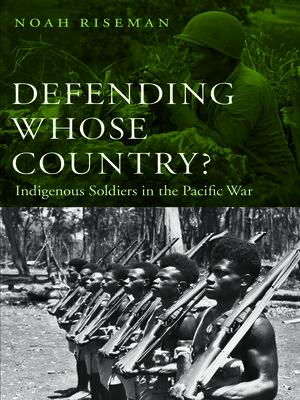
Sign up to save your library
With an OverDrive account, you can save your favorite libraries for at-a-glance information about availability. Find out more about OverDrive accounts.
Find this title in Libby, the library reading app by OverDrive.



Search for a digital library with this title
Title found at these libraries:
| Library Name | Distance |
|---|---|
| Loading... |
In the campaign against Japan in the Pacific during the Second World War, the armed forces of the United States, Australia, and the Australian colonies of Papua and New Guinea made use of indigenous peoples in new capacities. The United States had long used American Indians as soldiers and scouts in frontier conflicts and in wars with other nations. With the advent of the Navajo Code Talkers in the Pacific theater, Native servicemen were now being employed for contributions that were unique to their Native cultures. In contrast, Australia, Papua, and New Guinea had long attempted to keep indigenous peoples out of the armed forces altogether. With the threat of Japanese invasion, however, they began to bring indigenous peoples into the military as guerilla patrollers, coastwatchers, and regular soldiers.Defending Whose Country? is a comparative study of the military participation of Papua New Guineans, Yolngu, and Navajos in the Pacific War. In examining the decisions of state and military leaders to bring indigenous peoples into military service, as well as the decisions of indigenous individuals to serve in the armed forces, Noah Riseman reconsiders the impact of the largely forgotten contributions of indigenous soldiers in the Second World War.







